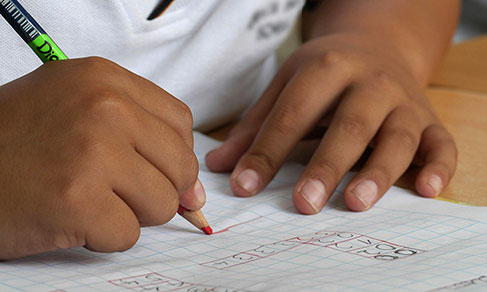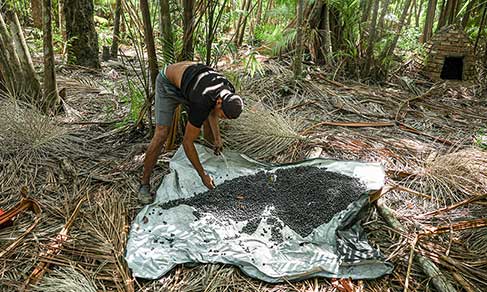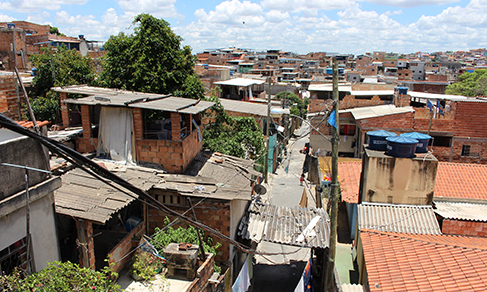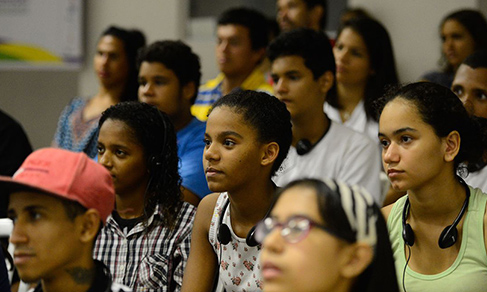Nossos serviços estão apresentando instabilidade no momento. Algumas informações podem não estar disponíveis.
SIS - Summary of Social Indicators
About - 2024
This publication gathers information on the living conditions of the Brazilian population, together with comments that highlight, in each one of the thematic dimensions of analysis, some of the main characteristics observed in the different population strata. Its indicators represent the diversity of society from the point of view of social inequalities and are organized into five chapters.
The chapter Economic structure and labor market deals with the recent behavior of the economy and that highlights the structural inequalities identified. It highlights the profile of persons who remain in informal jobs, underemployed, unemployed, or who are out of the workforce, mainly those considered more vulnerable, such as black or brown persons, as well as women and youths, especially the ones not studying or working.
The chapter Standard of living and income distribution, assesses the dynamics of income in Brazil and provides subsidies for the study of central dimensions that determine one’s living conditions: income inequalities and monetary poverty. This chapter is related to the previous one, and assesss the performance of such indicators relative to women and children, as well as youths and the black or brown population. As a complement, it approaches the housing conditions of the population, in a multidimensional analyses that does not only refer to the physical structure of housing units, but also other indicators, based on poverty measures by the World Bank.
The chapter Education presents indicators of school attendance and failure, also considering the impacts caused by the recent COVID-19 pandemic, among other aspects related to the topic.
With the objective of expanding the potentialities of study of the topics selected in this edition, the chapter Health conditions explores the social and economic aspects that affect people's welfare in health, aging, and mortality that affect the population, in different ways, and that examine their potential access to health goods and services, as well as territorial inequalities observed to meet existing needs.
Aiming at the expansion of the study of topics selected in this edition, the chapter Living conditions by geographic strata analyses, on an experimental basis, some indicators whose primary source is the Continuous National Household Sample Survey - Continuous PNAD, conducted by the IBGE, in a geographic analysis developed to expand the areas investigated by the survey.
Besides Continuous PNAD, other institutional and external sources contribute to the development of a multi faced panel of the Brazilian social reality, by varied territorial disaggregations, being the comparison of other countries based on relevant international indicators.
The publication is also available on the IBGE website, and also presents the complete table plan for the indicators investigated.
Tables - 2024
Economic structure and labor market ( xls | ods)
Standard of living and incom distribution ( xls | ods)
Housing conditions ( xls | ods)
Living conditions ( xls | ods)
Living conditions by geographic strata ( xls | ods)
Complementary files
Cartograms
- Geographic strata of municipalities (pdf)
Concepts and methods - 2024
As informações a seguir descrevem os metadados estatísticos, que são o conjunto de conceitos, métodos e aspectos relacionados às estatísticas, e são informações necessárias para compreender as características e a qualidade das estatísticas e interpretá-las corretamente.
Informações Gerais
Objetivo
Possibilitar o conhecimento da realidade brasileira, visando avaliar a qualidade de vida e os níveis de bem-estar das pessoas, as famílias e grupos sociais, a efetivação de direitos humanos e sociais, o acesso a diferentes serviços, bens e oportunidades.Tipo de operação estatística
Sistema de indicadores sínteseTipo de dados
Dados de pesquisa por amostragem probabilística, Registros administrativos, IndicadoresPeriodicidade de divulgação
AnualPopulação-alvo
População residente nos domicílios particulares permanentesMetodologia
Técnica de coleta:
Não se aplicaTemas
Temas e subtemas
Família, Grupos populacionais específicos, Trabalho, Trabalho remunerado, Outras formas de trabalho, Rendimento, despesa e consumo, Gênero, População, Condições de vida, pobreza e desigualdade, Educação, Características gerais da população, Habitação, Componentes da dinâmica demográfica e estatísticas vitaisUnidades de informação
Unidade de investigação
Pessoa, DomicílioUnidade de análise
Pessoa, DomicílioUnidade informante
Pessoa, Domicílio.Períodos de referência
Disseminação
Formas de disseminação
Publicação Digital (online)Nível de desagregação geográfica
Município da CapitalNível de divulgação
Brasil Grandes Regiões Unidades da Federação Regiões Metropolitanas dos Municípios da Capital Municípios da Capital Estratos geográficosHistórico
Saiba mais
https://metadados.ibge.gov.br/consulta/estatisticos/operacoes-estatisticas/XSPublications - 2024
Description
The Summary of Social Indicators assesses the life quality and well-being levels of persons, households and population groups and the realization of social and human rights, as well as the access to different services, goods and opportunities, by means of indicators aiming at taking into account the heterogeneity of the Brazilian society under the perspective of the social inequalities.
The Summary of Social Indicators began in 1998. Its origin dates back to the Social indicators: 1979 report publication, also from the IBGE, which broke the hegemony of using economic indicators for such purposes, particularly the Gross Domestic Product - GDP. The report proposed a new scope to assess the life conditions of the population, including issues related to Population and households, Labor division, Occupational mobility of the workforce, Income distribution, Household expenditure, Housing, Education and Health. Up to the 2016 edition, the National Household Sample Survey - PNAD was its major information source, complemented by other statistics, either from the IBGE or from external sources. With the replacement of PNAD by the Continuous National Household Sample Survey - Continuous PNAD, the latter became the major information source of the study, also complemented by other internal and external statistics.
Along its existence, the study has been including a number of key information to map the inequalities and their effects on the Brazilian social reality, aiming not only at incorporating current and relevant issues for public policies, but also at deepening the analyses based on the inequalities of gender, color or race and age groups.
The periodicity of the study is annual, except in the years when the Population Census takes place. Its geographic coverage is national, with results released for Brazil, Major Regions, Federation Units, Metropolitan Areas and Municipalities of the Capitals.
Downloads
Technical Information
Up to the 2016 edition, the National Household Sample Survey - PNAD was the major source of information of the Summary of Social Indicators, complemented by other statistics, either from the IBGE or external. AS PNAD was replaced by the Continuous National Household Sample Survey - Continuous PNAD, this became the major source of information, together with other internal and external statistics.
Methodological considerations on both surveys can be respectively obtained on the following addresses:
News and Releases
Child education indicators advance, but are still below the target set by the National Education Plan
In 2024, the gross school attendance rate of persons aged 0 to 3 reached 39.7%, an advance of more than...
03/12/2025
IBGE shows that one out of every four older adults were employed in 2024
The population aged 60 and over increased from 22 million to 34.1 million, between 2012 and 2024, a percentage...
03/12/2025
8.6 million persons got out of poverty between 2023 and 2024
Between 2023 and 2024, considering the paramenters proposed by the World Bank, the country's population...
03/12/2025
IBGE’s new geographic divisions detail inequalities in the country in 2023
The IBGE presents today (4), as part of the Summary of Social Indicators 2024, a new analysis of the...
04/12/2024
Child education grows in 2023 and returns to pre-pandemic level
After the negative impact caused by the COVID-19 pandemic since 2020, access to education for the younger...
04/12/2024
One in every five Brazilians aged 15 to 29 neither studied nor worked in 2022
The number of young people who were neither studying nor employed was 10.9 million in 2022, which corresponds...
06/12/2023
In 2022, hourly earnings of white workers (R$ 20.0) was 61.4% above that of black or brown ones (R$12.4)
From 2021 to 2022, the percentage of employed persons with a formal contract dropped from 48% to 47.6%....
06/12/2023
Privately-owned housing units are the majority, but 13.5% of them have no documentation
About 64.6% of the Brazilian population lives in privately-owned and fully paid-off housing units, although...
06/12/2023
Poverty drops to 31.6% of the population in 2022, after reaching 36.7% in 2021
The percentage of persons living in extreme poverty, that is, those who mad less than R$ 200.00 per month,...
06/12/2023
In 2021, 12.7 million youth in Brazil were neither stuyding nor working
In spite of the decrease from 2020, first year of the pandemic, the number of youth not studying or working...
02/12/2022
Errata
Education data amendment of publication Summary of Social Indicators: an analysis of living condition of Brazilian population 2024
Published date: 12/12/2024
Description:
The IBGE reports that wrong values were pinpointed in the text of the digital publication, titles of graphs not updated for the year of 2023 and absence of a Federation Unit in a graph in the education chapter.Actions: Digital publication amended on this date with the inclusion of an errata.
Replacement of the publication 2022 Summary of Social Indicators
Published date: 21/12/2022
Description:
Graph 7, on page 64, lacked data on the Espírito Santo Federation Unit.Actions: Errata were included in the file disclosed on the IBGE portal and in the printed publication.
Replacement of table of 2022 Summary of Social Indicators
Published date: 15/12/2022
Description:
Processing error in table 3.71 of the table plan on the Internet, with health indicators, specifically in geographic disaggregations (Major Regions and Federation Units), identified by the Health Department of Goiás.Actions: The file has been amended and replaced.
Replacement of two tables in the table plan of the 2020 Summary of Social Indicators
Published date: 11/03/2021
Description:
Wrong calculation of tables “1.3 rend” and “1.3 rend UF”, which report the average earnings and average hour-earnings for main job and all jobs.Actions: Amendment of the formula that generates the indicators shown in the tables.
Calendar error in the release of the topic Summary of Social Indicators: An analysis of the Brazilian population living conditions
Published date: 12/07/2019
Description:
An error, identified by the IBGE, for the non-compliance with the release data established in December 2018. Due to rescheduling, the new release date for the results of the Summary of Social Indicators: An analysis of the Brazilian population living conditions is November 06, 2019.Ações: The release calendar was corrected.
Correction of the graph published by the IBGE News Agency
Published date: 06/12/2018
Description:
In the graph "attendance to school or daycare by level of schooling of the most educated resident (%)", published in the IBGE News Agency on 05/12/2018, at 10 am, the correct proportion for the resident with higher education is 96%, and not 62.2%.Actions: Graph corrected and made available on 06/12/2018, at 11h15.
Calendar error in the release of the Summary of Social Indicators: An analysis of the living conditions of the Brazilian population 2018
Published date: 24/08/2018
Description:
Error, identified by the IBGE, for the non release of the survey on the date set in the calendar made available in December 2017.
Because of the need for new deadlines, the disclosure date of the results of the Summary of Social Indicators: An analysis of the living conditions of the Brazilian population 2018 was rescheduled to December 5.
Actions: Calendar amended.
Ordinance on pre-release access (in Portuguese)
Divulgação dos resultados de indicadores conjunturais
Ministério do Planejamento, Orçamento e Gestão
GABINETE DO MINISTRO
PORTARIA Nº 355, DE 5 DE NOVEMBRO DE 2007
(Publicada no Diário Oficial da União nº 213, Seção 1, de 06.11.2007)
O MINISTRO DE ESTADO DO PLANEJAMENTO, ORÇAMENTO E GESTÃO, no uso das atribuições que lhe confere o inciso II, do artigo 87 da Constituição Federal, resolve:
Art. 1º - A divulgação dos resultados de indicadores conjunturais produzidos pela Fundação Instituto Brasileiro de Geografia e Estatística - IBGE seguirá as seguintes etapas:
I - às sete horas do dia da divulgação serão encaminhados os resultados, acompanhados de um sumário-executivo elaborado pelo IBGE, para as autoridades da lista de precedência;
II - às nove horas do dia da divulgação serão encaminhados os resultados para os órgãos de imprensa e disseminados na Internet, através do sítio https://www.ibge.gov.br.
§ 1º. Os técnicos do IBGE estarão disponíveis para prestar esclarecimentos aos usuários sobre os resultados da pesquisa divulgada a partir do encaminhamento de que trata o inciso II do caput.
§ 2º. O disposto nesta portaria aplica-se a qualquer indicador conjuntural produzido pelo IBGE, especialmente aos seguintes:
I - Índice Nacional de Preços ao Consumidor (INPC);
II - Índice Nacional de Preços ao Consumidor Amplo (IPCA);
III - Índice Nacional de Preços ao Consumidor Amplo - Especial (IPCA-E);
IV - Índice Nacional de Preços ao Consumidor Amplo (IPCA-15);
V - Pesquisa Mensal de Emprego (PME);
VI - Contas Nacionais Trimestrais;
VII - Pesquisa Industrial Mensal - Produção Física Brasil (PIM-PF Brasil);
VIII - Pesquisa Industrial Mensal - Produção Física Regional (PIM-PF Regional);
IX - Pesquisa Industrial Mensal de Emprego e Salário - (PIMES);
X - Pesquisa Mensal de Comércio (PMC);
XI - Sistema Nacional de Pesquisa de Custos e Índices da Construção Civil (SINAPI);
XII - Conjuntura Agropecuária (Levantamento Sistemático da Produção Agrícola - mensal; Pesquisa Trimestral de Abate de Animais; Pesquisa Trimestral de Leite; Pesquisa Trimestral de Produção de Ovos de Galinha; Pesquisa Trimestral do Couro).
Art. 2° - A relação das autoridades constantes da lista de precedência específica a cada pesquisa de indicadores conjunturais, será divulgada por intermédio de Nota Oficial da Instituição e disseminada no portal do IBGE na Internet, através do sítio https://www.ibge.gov.br
Art. 3º - As autoridades constantes da lista de precedência deverão observar o mais rigoroso sigilo das informações referentes aos indicadores de que trata esta Portaria, nos termos do disposto na Lei nº 8.112, de 11 de dezembro de 1990.
Art. 4º - Revogam-se as Portarias nº 164/MP, de 20 de dezembro de 1999, e nº 167/MP, de 5 de setembro de 2003.
Art. 5º - Esta Portaria entra em vigor na data de sua publicação.
PAULO BERNARDO SILVA
O IBGE divulga a relação das autoridades que recebem com precedência os resultados das pesquisas conjunturais produzidas por esta Instituição:
Ministra do Planejamento e Orçamento – Simone Nassar Tebet Rocha
- Índice Nacional de Preços ao Consumidor (INPC)
- Índice Nacional de Preços ao Consumidor Amplo (IPCA)
- Índice Nacional de Preços ao Consumidor Amplo - Especial (IPCA-E)
- Índice Nacional de Preços ao Consumidor Amplo (IPCA-15)
- Contas Nacionais Trimestrais
- Pesquisa Industrial Mensal - Produção Física Brasil (PIM-PF Brasil)
- Pesquisa Industrial Mensal - Produção Física Regional (PIM-PF Regional)
- Pesquisa Mensal de Comércio (PMC)
- Pesquisa Mensal de Serviços (PMS)
- Sistema Nacional de Pesquisa de Custos e Índices da Construção Civil (SINAPI)
- Conjuntura Agropecuária
- Levantamento Sistemático da Produção Agrícola - mensal
- Pesquisa Trimestral de Abate de Animais
- Pesquisa Trimestral de Leite
- Pesquisa Trimestral de Produção de Ovos de Galinha
- Pesquisa Trimestral do Couro
- Índice de Preços ao Produtor - Indústrias Extrativas e de Transformação (IPP)
- Pesquisa Nacional por Amostra de Domicílios Contínua (PNAD Contínua)
Ministro da Fazenda – Fernando Haddad
- Índice Nacional de Preços ao Consumidor (INPC)
- Índice Nacional de Preços ao Consumidor Amplo (IPCA)
- Índice Nacional de Preços ao Consumidor Amplo - Especial (IPCA-E)
- Índice Nacional de Preços ao Consumidor Amplo (IPCA-15)
- Contas Nacionais Trimestrais
- Pesquisa Industrial Mensal - Produção Física Brasil (PIM-PF Brasil)
- Pesquisa Industrial Mensal - Produção Física Regional (PIM-PF Regional)
- Pesquisa Mensal de Comércio (PMC)
- Pesquisa Mensal de Serviços (PMS)
- Sistema Nacional de Pesquisa de Custos e Índices da Construção Civil (SINAPI)
- Conjuntura Agropecuária
- Levantamento Sistemático da Produção Agrícola - mensal
- Pesquisa Trimestral de Abate de Animais
- Pesquisa Trimestral de Leite
- Pesquisa Trimestral de Produção de Ovos de Galinha
- Pesquisa Trimestral do Couro
- Índice de Preços ao Produtor - Indústrias Extrativas e de Transformação (IPP)
- Pesquisa Nacional por Amostra de Domicílios Contínua (PNAD Contínua)
Ministro do Desenvolvimento, Indústria, Comércio e Serviços - Geraldo José Rodrigues Alckmin Filho
- Contas Nacionais Trimestrais
- Pesquisa Industrial Mensal - Produção Física Brasil (PIM-PF Brasil)
- Pesquisa Industrial Mensal - Produção Física Regional (PIM-PF Regional)
- Pesquisa Mensal de Comércio (PMC)
- Pesquisa Mensal de Serviços (PMS)
- Pesquisa Nacional por Amostra de Domicílios Contínua (PNAD Contínua)
Presidente do Banco Central - Gabriel Muricca Galípolo
- Índice Nacional de Preços ao Consumidor (INPC)
- Índice Nacional de Preços ao Consumidor Amplo (IPCA)
- Índice Nacional de Preços ao Consumidor Amplo - Especial (IPCA-E)
- Índice Nacional de Preços ao Consumidor Amplo (IPCA-15)
- Contas Nacionais Trimestrais
- Pesquisa Industrial Mensal - Produção Física Brasil (PIM-PF Brasil)
- Pesquisa Industrial Mensal - Produção Física Regional (PIM-PF Regional)
- Pesquisa Mensal de Comércio (PMC)
- Pesquisa Mensal de Serviços (PMS)
- Sistema Nacional de Pesquisa de Custos e Índices da Construção Civil (SINAPI)
- Conjuntura Agropecuária
- Levantamento Sistemático da Produção Agrícola - mensal
- Pesquisa Trimestral de Abate de Animais
- Pesquisa Trimestral de Leite
- Pesquisa Trimestral de Produção de Ovos de Galinha
- Pesquisa Trimestral do Couro
- Índice de Preços ao Produtor - Indústrias Extrativas e de Transformação (IPP)
- Pesquisa Nacional por Amostra de Domicílios Contínua (PNAD Contínua)
Presidente da Caixa Econômica Federal - Carlos Antônio Vieira Fernandes
- Sistema Nacional de Pesquisa de Custos e Índices da Construção Civil (SINAPI)
Chefe de Gabinete Adjunto de Informações em Apoio à Decisão do Gabinete Pessoal do Presidente da República - Sandra Márcia Chagas Brandão
- Índice Nacional de Preços ao Consumidor (INPC)
- Índice Nacional de Preços ao Consumidor Amplo (IPCA)
- Índice Nacional de Preços ao Consumidor Amplo - Especial (IPCA-E)
- Índice Nacional de Preços ao Consumidor Amplo (IPCA-15)
- Contas Nacionais Trimestrais
- Pesquisa Industrial Mensal - Produção Física Brasil (PIM-PF Brasil)
- Pesquisa Industrial Mensal - Produção Física Regional (PIM-PF Regional)
- Pesquisa Mensal de Comércio (PMC)
- Pesquisa Mensal de Serviços (PMS)
- Sistema Nacional de Pesquisa de Custos e Índices da Construção Civil (SINAPI)
- Conjuntura Agropecuária
- Levantamento Sistemático da Produção Agrícola - mensal
- Pesquisa Trimestral de Abate de Animais
- Pesquisa Trimestral de Leite
- Pesquisa Trimestral de Produção de Ovos de Galinha
- Pesquisa Trimestral do Couro
- Índice de Preços ao Produtor - Indústrias Extrativas e de Transformação (IPP)
- Pesquisa Nacional por Amostra de Domicílios Contínua (PNAD Contínua)
Presidente do IBGE
Marcio Pochmann
Atualizado em 8 de janeiro de 2025
Divulgação dos resultados de indicadores estruturais
Ministério do Planejamento, Orçamento e Gestão
GABINETE DO MINISTRO
PORTARIA Nº 15, DE 27 DE JANEIRO DE 2005
(Publicada no Diário Oficial da União edição número 20 de 28/01/2005)
O MINISTRO DE ESTADO DO PLANEJAMENTO, ORÇAMENTO E GESTÃO, INTERINO, no uso das atribuições que lhe confere o art. 87, parágrafo único, incisos I e II, da Constituição e considerando o disposto no art. 27, inciso XVII, alínea "c", da Lei nº 10.683, de 28 de maio de 2003, resolve:
Art. 1º - Disciplinar os procedimentos a serem observados na divulgação dos resultados de indicadores estruturais produzidos pela Fundação Instituto Brasileiro de Geografia e Estatística - IBGE.
Art. 2º Os resultados serão encaminhados pela Fundação Instituto Brasileiro de Geografia e Estatística - IBGE ao Ministro do Planejamento, Orçamento e Gestão, com antecedência mínima de quarenta e oito horas do horário fixado no art. 3º, inciso I, desta Portaria.
Art. 3º No dia da divulgação dos resultados dos indicadores de que trata esta Portaria, serão observados:
I - liberação para a imprensa e disponibilização pela Internet, no endereço: (https://www.ibge.gov.br), às 10 horas;
II - os técnicos do IBGE somente poderão prestar esclarecimentos sobre os resultados dos indicadores estruturais após a liberação e publicação na forma do inciso I.
Art. 4º Os servidores que tenham conhecimento prévio dos resultados deverão manter rigoroso sigilo, sob pena de responsabilidade nos termos da Lei nº 8.112, de 11 de dezembro de 1990.
Art. 5º Esta Portaria entra em vigor na data de sua publicação.
NELSON MACHADO













